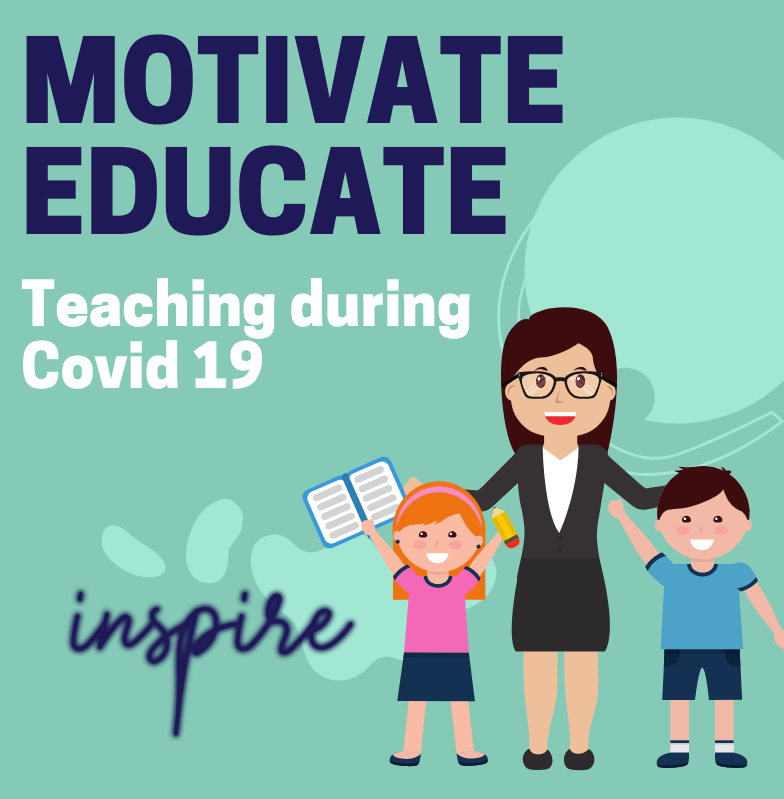Boosting Student Engagement: Strategies for Success

In today's educational landscape, student engagement has become a crucial aspect of successful teaching and learning. Educators around the world are constantly striving to find effective strategies to enhance student engagement in order to promote meaningful and lasting learning experiences.
This article aims to explore the importance of student engagement, the key elements that contribute to it, and strategies that can be implemented to boost engagement in the classroom.
Understanding the Importance of Student Engagement
Student engagement plays a pivotal role in the learning process. When students are actively engaged, they are more likely to retain information, make connections between concepts, and develop critical thinking skills. Furthermore, engagement fosters a positive classroom environment, where students feel motivated, confident, and valued. By emphasizing student engagement, educators can create a dynamic learning environment that nurtures academic growth and personal development.
One of the key benefits of student engagement is its ability to enhance information retention. When students are actively engaged in the learning process, they are more likely to remember and internalize the knowledge they acquire. This is because engagement encourages students to actively process information, making it easier for them to store it in their long-term memory. As a result, students are better equipped to recall and apply what they have learned in future contexts.
Moreover, student engagement promotes the development of critical thinking skills. When students are actively engaged, they are encouraged to think deeply about the subject matter, analyze different perspectives, and evaluate evidence. This process of critical thinking not only enhances their understanding of the topic at hand but also equips them with valuable skills that can be applied across various disciplines and real-life situations. By fostering critical thinking through engagement, educators empower students to become independent and creative thinkers.
The Role of Engagement in Learning
Engagement is not merely about keeping students occupied or entertained; it goes beyond surface-level interaction. When students are engaged, they become active participants in their learning journey. They are motivated to explore, question, and delve deeper into the subject matter. This active involvement facilitates the transfer of knowledge from short-term memory to long-term memory, enhancing the overall learning experience.
Furthermore, engagement promotes the development of metacognitive skills. Metacognition refers to the ability to reflect on one's own thinking processes and regulate one's learning. When students are engaged, they are more likely to monitor their understanding, identify areas of confusion, and seek clarification. This metacognitive awareness allows students to take ownership of their learning and make adjustments to their study strategies, leading to improved academic performance.
The Impact of Disengagement on Academic Performance
Conversely, when students are disengaged, their academic performance suffers. Disengagement can manifest in various ways, such as lack of interest, apathy, and passive behaviors. When students are disengaged, they are less likely to pay attention, participate in class discussions, and complete assignments to the best of their abilities. This ultimately leads to poor academic performance and a negative impact on students' overall educational outcomes.
In addition to academic consequences, disengagement can also have social and emotional repercussions. When students feel disengaged, they may experience feelings of frustration, boredom, and isolation. This can lead to a decline in their self-esteem and motivation, further exacerbating their disengagement. Moreover, disengaged students may struggle to develop positive relationships with their peers and teachers, hindering their overall social and emotional well-being.
It is important for educators to recognize the signs of disengagement and take proactive measures to re-engage students. By implementing strategies that promote active learning, such as hands-on activities, group discussions, and real-world applications, educators can create an inclusive and stimulating learning environment that encourages student participation and fosters a love for learning.
Key Elements of Student Engagement
To effectively boost student engagement, it is essential to understand the key elements that contribute to it.
Student engagement is a multifaceted concept that involves various aspects of a student's experience in the classroom. It goes beyond simply attending class and completing assignments. True engagement occurs when students are actively involved in their learning, both mentally and emotionally. Let's explore the three key elements that contribute to student engagement in more detail.
Cognitive Engagement
Cognitive engagement focuses on the mental processes that support learning. It involves critical thinking, problem-solving, and metacognition. When students are cognitively engaged, they are actively processing information, making connections between concepts, and applying their knowledge to real-life situations. This type of engagement goes beyond memorization and encourages deeper understanding and higher-order thinking skills.
Teachers can promote cognitive engagement by designing lessons that challenge students' thinking and encourage them to analyze, evaluate, and synthesize information. Providing opportunities for collaborative learning, where students can discuss and debate ideas, also enhances cognitive engagement. Additionally, encouraging students to reflect on their learning and set goals for improvement can further deepen their cognitive engagement.

Emotional Engagement
Emotional engagement involves tapping into students' feelings and emotions. When students feel a sense of belonging, safety, and trust within the classroom environment, they are more likely to engage actively in the learning process. Building positive teacher-student relationships and creating a supportive classroom climate are crucial for fostering emotional engagement.
Teachers can promote emotional engagement by incorporating activities that allow students to share their personal experiences and connect their learning to their own lives. Providing opportunities for cooperative learning, where students work together towards a common goal, can also foster a sense of belonging and emotional engagement. Additionally, recognizing and validating students' emotions, and creating a safe space for them to express themselves, can further enhance emotional engagement.
Behavioral Engagement
Behavioral engagement encompasses students' physical involvement and participation in class activities. It includes actions such as raising hand, participating in discussions, and completing assignments on time. When students are behaviorally engaged, they are actively participating in the learning process and taking ownership of their education.
Teachers can enhance behavioral engagement by providing clear expectations and guidelines for classroom behavior. Offering choices and autonomy in learning tasks can also increase students' motivation and willingness to participate. Additionally, providing timely and constructive feedback on students' work can help them stay on track and maintain their behavioral engagement.
In conclusion, student engagement is a complex and multifaceted concept that involves cognitive, emotional, and behavioral elements. By understanding and addressing these key elements, teachers can create a learning environment that promotes active and meaningful engagement, leading to improved student outcomes and a love for lifelong learning.
Strategies to Enhance Student Engagement
Now that we understand the importance of student engagement and the key elements that contribute to it, let's explore some practical strategies to enhance engagement in the classroom.
Student engagement is crucial for effective learning. When students are actively involved in the learning process, they are more likely to retain information, develop critical thinking skills, and apply their knowledge in real-world situations. In order to create an engaging classroom environment, educators can implement various strategies that promote student participation and foster a love for learning.
Creating a Positive Learning Environment
A positive learning environment is conducive to student engagement. Establishing classroom norms, promoting respectful dialogue, and nurturing a supportive atmosphere cultivates a sense of belonging and motivates students to actively participate. When students feel safe and valued, they are more likely to take risks, ask questions, and contribute to class discussions. Additionally, creating a visually appealing and organized space can help reduce distractions and enhance focus. By incorporating elements such as colorful bulletin boards, comfortable seating arrangements, and well-organized materials, educators can create an environment that is visually stimulating and conducive to learning.
Furthermore, building positive relationships with students is essential for creating an engaging classroom. Taking the time to get to know each student on a personal level, understanding their interests and learning styles, and providing individualized support can go a long way in fostering engagement. When students feel that their teachers genuinely care about their success, they are more likely to be motivated and actively participate in class activities.
Incorporating Interactive Teaching Methods
Engagement is often heightened when students are actively involved in the learning process. Incorporating interactive teaching methods such as group discussions, hands-on activities, and project-based learning can stimulate curiosity, encourage collaboration, and promote critical thinking. These methods provide opportunities for students to connect with the material in meaningful ways.
Group discussions allow students to share their ideas, listen to different perspectives, and develop their communication skills. By encouraging students to actively participate in discussions, educators can create a collaborative learning environment where students learn from each other and build upon their knowledge.

Hands-on activities provide students with the opportunity to apply what they have learned in a practical and tangible way. Whether it's conducting experiments, creating models, or solving real-world problems, hands-on activities engage students in active learning and help them make connections between theoretical concepts and their real-life applications.
Project-based learning is another effective method to enhance student engagement. By assigning projects that require students to research, analyze, and present their findings, educators can foster creativity, critical thinking, and problem-solving skills. Projects also allow students to take ownership of their learning and explore topics that interest them, making the learning experience more meaningful and engaging.
Utilizing Technology for Engagement
In the digital age, technology can be a powerful tool for student engagement. Utilizing educational apps, interactive multimedia, and online resources can offer alternative avenues for students to explore and interact with the subject matter. Technology can also facilitate personalized learning experiences, cater to various learning styles, and promote creativity.
Educational apps provide students with interactive and engaging learning experiences. Whether it's practicing math skills, learning a new language, or exploring scientific concepts through simulations, educational apps can make learning fun and engaging. These apps often incorporate gamification elements, such as rewards and challenges, which motivate students to continue learning and achieve their goals.
Interactive multimedia, such as videos, animations, and virtual reality experiences, can bring complex concepts to life and make them more accessible to students. By incorporating multimedia into their lessons, educators can cater to different learning styles and provide students with a visual and auditory representation of the subject matter. This not only enhances understanding but also captures students' attention and keeps them engaged throughout the lesson.
Online resources, such as educational websites, digital libraries, and online forums, provide students with a wealth of information and opportunities for collaboration. Students can access a wide range of resources to deepen their understanding of a topic, conduct research for projects, and engage in discussions with peers from around the world. Online resources also allow students to take ownership of their learning and explore topics that interest them, fostering a sense of curiosity and intrinsic motivation.
In conclusion, enhancing student engagement is a continuous process that requires intentional planning and implementation of various strategies. By creating a positive learning environment, incorporating interactive teaching methods, and utilizing technology, educators can create an engaging classroom where students are motivated, actively participate, and develop a lifelong love for learning.
Overcoming Challenges in Student Engagement
While striving to enhance student engagement, educators may encounter various challenges along the way. Let's explore some common challenges and possible solutions.
Addressing Individual Learning Styles
Students have diverse learning styles, and a one-size-fits-all approach may not effectively engage all learners. To address this challenge, educators can incorporate a variety of instructional strategies that cater to different learning styles, such as visual aids, auditory prompts, and kinesthetic activities. By providing multiple entry points, educators can reach a wider range of students and foster engagement.
Dealing with Classroom Distractions
Classroom distractions can hinder student engagement and focus. By implementing proactive measures, such as creating a distraction-free zone, setting clear expectations, and utilizing effective classroom management strategies, educators can minimize distractions and create a more conducive learning environment.
Encouraging Participation from Shy Students
Shy or introverted students may be hesitant to actively participate in class discussions or activities. It is crucial to create a safe and inclusive space that encourages all students to contribute. Providing alternative forms of participation, such as written responses, small group discussions, or online forums, can help shy students feel more comfortable engaging with the material and their peers.
Boosting student engagement is an ongoing process that requires dedication, creativity, and flexibility. By emphasizing the importance of engagement, addressing individual needs, and implementing effective strategies, educators can create a vibrant learning environment where students thrive and achieve their full potential.
.png?width=1322&height=350&name=C3ITXperts-logo-R%20(1).png)





.png)

